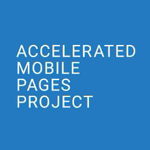 Mobile devices have revolutionized the way people access information. As they're getting better in doing things we want, people can't just get enough of them. With the internet available to almost anyone, people are consuming huge amount of new and information on their devices. The search giant Google wants to make it a little bit faster.
Mobile devices have revolutionized the way people access information. As they're getting better in doing things we want, people can't just get enough of them. With the internet available to almost anyone, people are consuming huge amount of new and information on their devices. The search giant Google wants to make it a little bit faster.
The company is announcing its new open-source initiative called Accelerated Mobile Pages. The project aims to improve the performance of mobile websites.
"We want webpages with rich content like video, animations and graphics to work alongside smart ads, and to load instantaneously. We also want the same code to work across multiple platforms and devices so that content can appear everywhere in an instant - no matter what type of phone, tablet or mobile device you’re using," wrote David Besbris, Vice President Engineering for Google Search, in a blog post on October 7th, 2015.
No one wants a slow loading page. As the web has more to give and mobile devices have more resources under their bonnets, web browsing experience is still below expectation. Especially in terms of speed and performance.
Publishers around the world that want their contents to be seen, want to reach readers as fast as possible. Lags or slow loading pages will make them lose readers. This in turn will reduce earning revenue through advertisements or subscriptions.
"The reality is that content can take several seconds to load, or, because the user abandons the slow page, never fully loads at all," said Google.
Accelerated Mobile Pages is Google's answer in trying to reduce such experience. The project relies on AMP HTML, an open framework built entirely out of existing web technologies which allows websites to build light-weight webpages.
Simplifying Web Pages To Prioritize Speed

What lies inside, Accelerated Mobile Pages simplifies the HTML code behind much mobile web content to prioritize speed over other functions. It also aims to improve caching of content by storing copies of web pages for quicker access. Google also said it would make its cloud service available for this caching method.
Google itself is anticipating more of Google products to use AMP HTMP pages. One of which is its Google News. At the moment of the announcement, 30 publishers around the world are already taking their part.
"Twitter, Pinterest, WordPress.com, Chartbeat, Parse.ly, Adobe Analytics and LinkedIn are among the first group of technology partners planning to integrate AMP HTML pages," continue Besbris
With more participants on board, Google will work on the projects to build more functionalities and features focusing on areas such as:
- Content: As the web is having more rich contents, the Accelerated Mobile Pages project provides an open-source approach that allows users to focus on producing contents while relying on the shared components.
- Distribution: Contents should be able to be distributed across all kinds of devices and platforms anywhere and anytime. Publishers can host their contents through Google's global cache.
- Advertising: Any websites using AMP HTML will retain their choice of ad networks, as well as any formats that don't detract from the user experience.
By announcing and demonstrating the ways to make news articles load much faster on mobile web browsers, Google is aiming to rival the efforts done by Facebook, Apple, Snapchat and others that were threatening publishers with ad blocking software.
The main idea of this entire project is Google's desire to "make the World Wide Web great again," said Richard Gingras, Head of News Products at Google.
Google unveiled Accelerated Mobile Pages which source code is already available on GitHub, at simultaneous press conference in both London and New York.